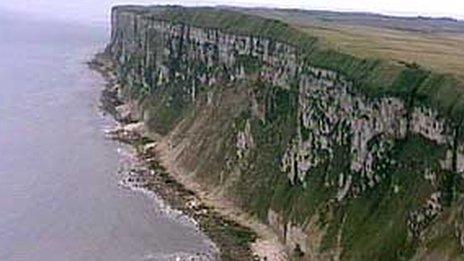Tombstoning: Man suffers life changing injuries in Weymouth
- Published
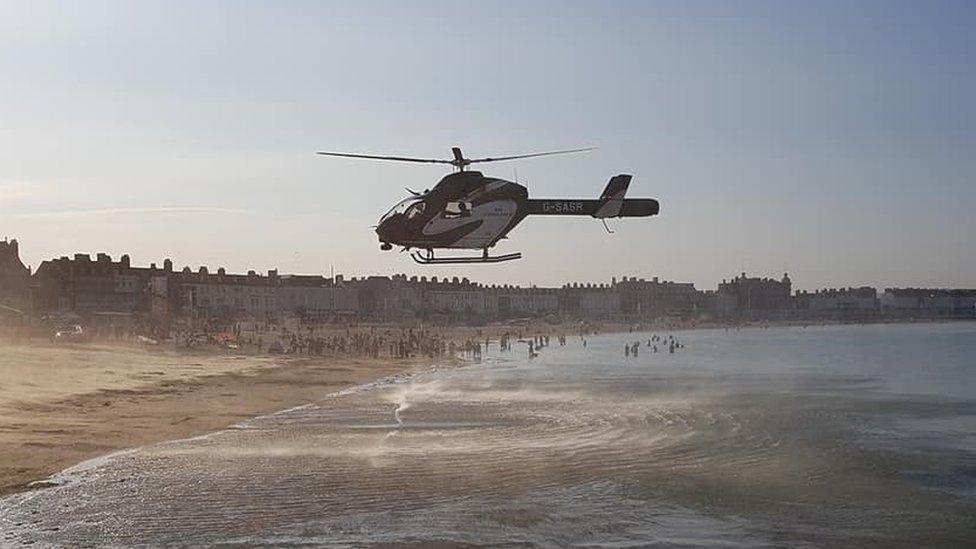
Weymouth Sands had to be cleared so the air ambulance could reach the casuality
A man has suffered life changing injuries after tombstoning in Weymouth Sands, as the coastguard warns of the activity's risk.
Wyke Regis coastguard received calls at 18:30 BST on Saturday of an unconscious man pulled from the water near the Pavilion.
The air ambulance took the casualty to hospital where he is being treated for spinal injuries.
The man had dived from the harbour wall adjacent to the Weymouth Pavilion.
Wyke Regis CRT said jumping from any height into water "can and does end with individuals sustaining life changing injuries or worse".
They also asked the public to "enjoy the weather sensibly."

What is Tombstoning?
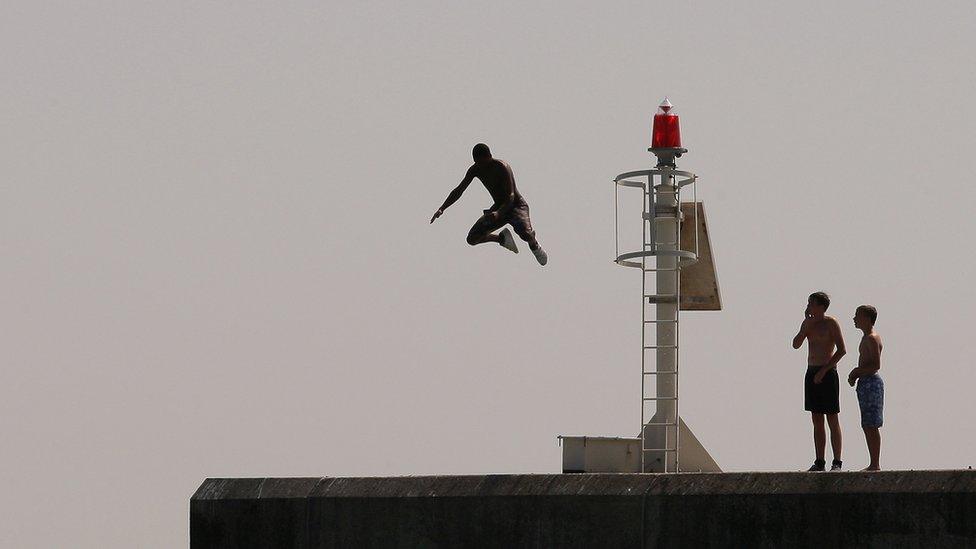
Campaigners say tombstoning is especially dangerous because of hidden underwater objects
The activity involves jumping off cliffs, piers, or harbour walls into water
More than 22 people have died "tombstoning" in the 10 years
Dangers are increased with tide depths changing and objects hidden beneath the surface move constantly
Tombstoning is currently legal, but bylaws have been created on some bridges to prevent jumping

- Published17 June 2018
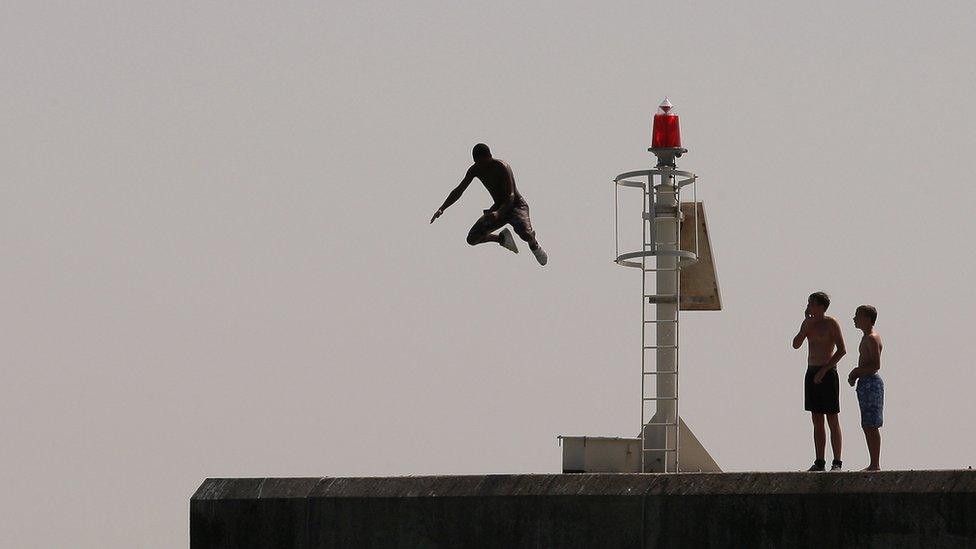
- Published14 October 2016
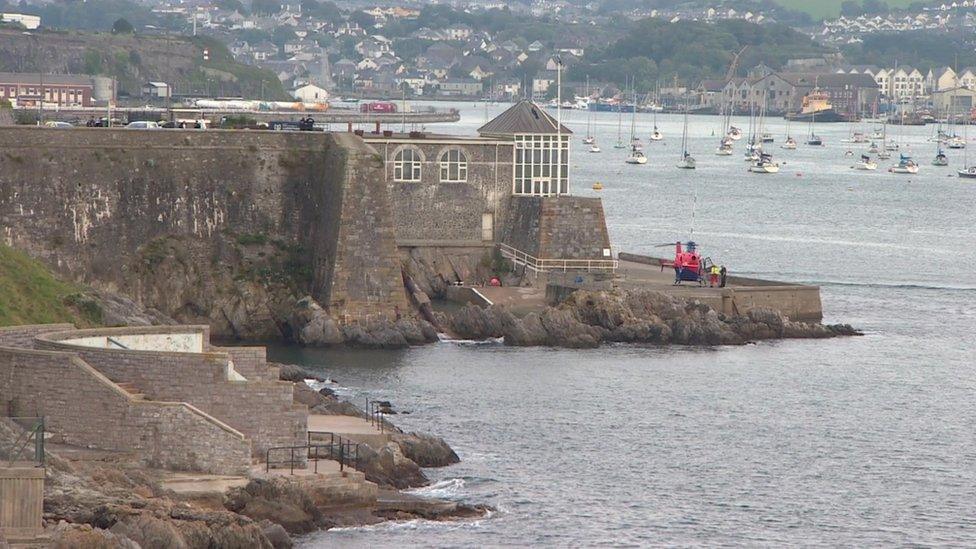
- Published30 July 2015
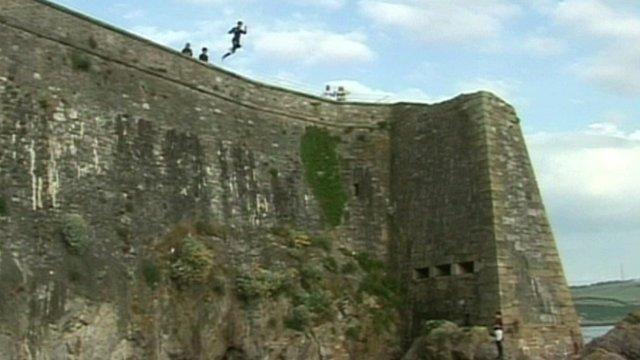
- Published21 June 2013
